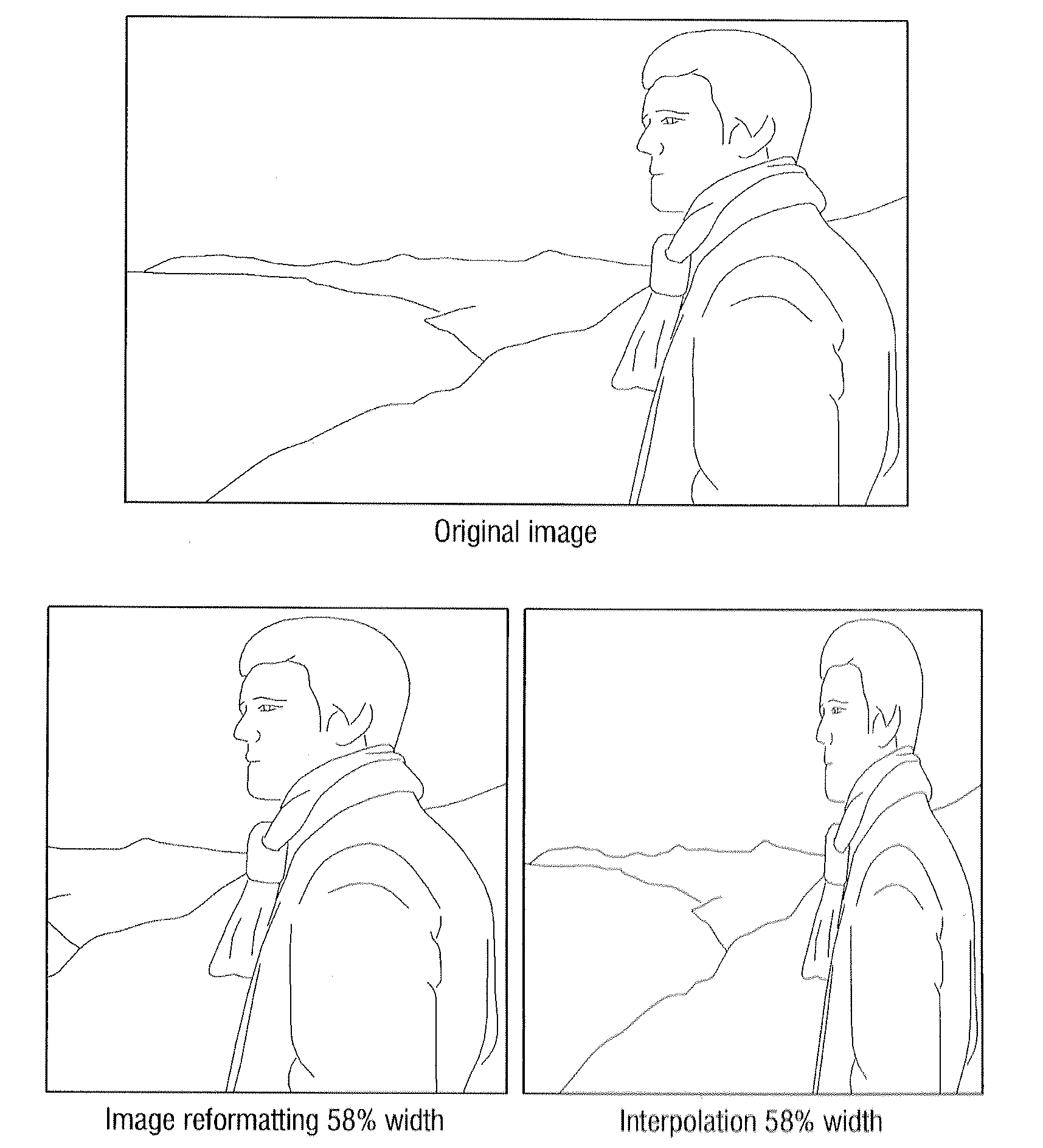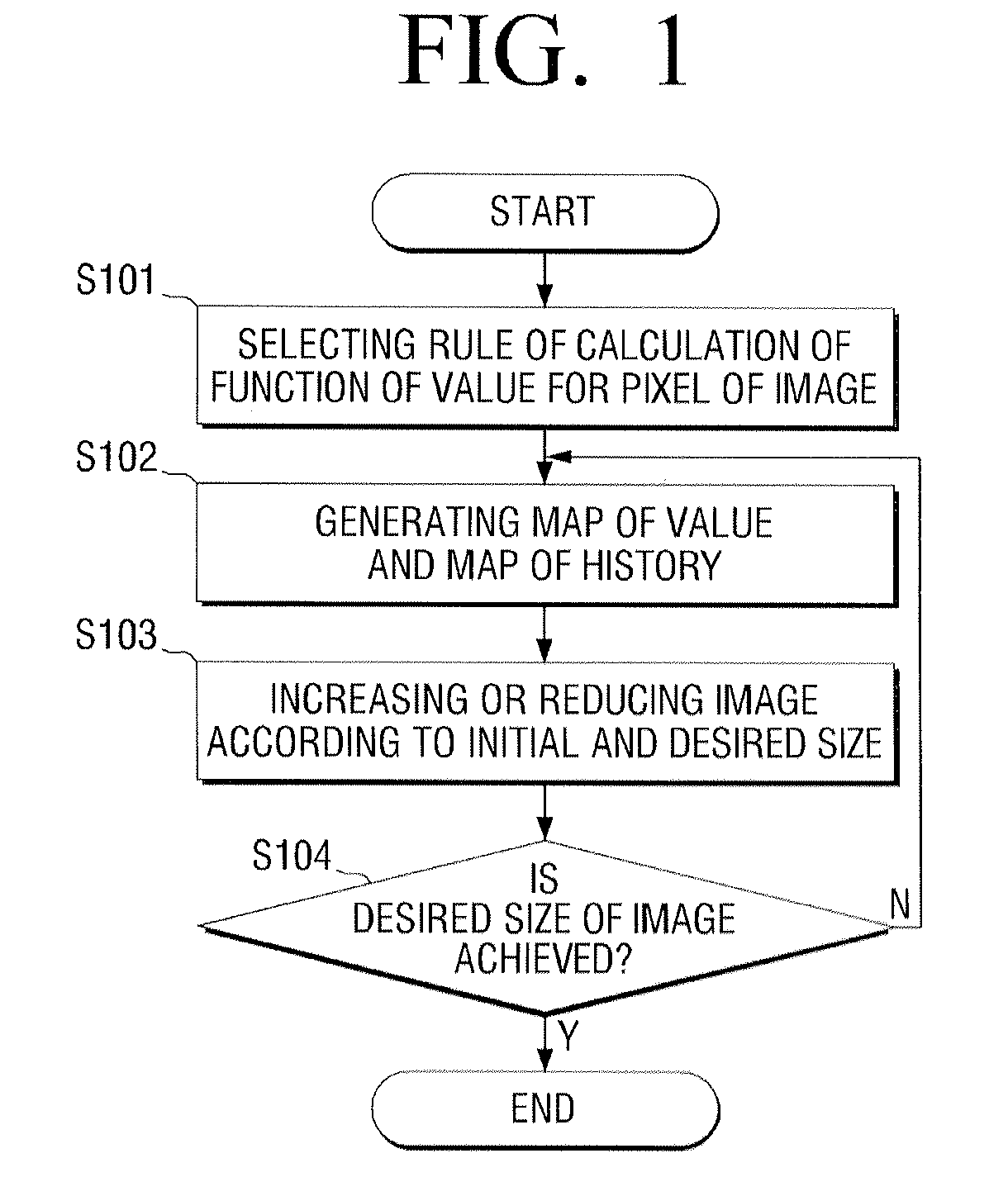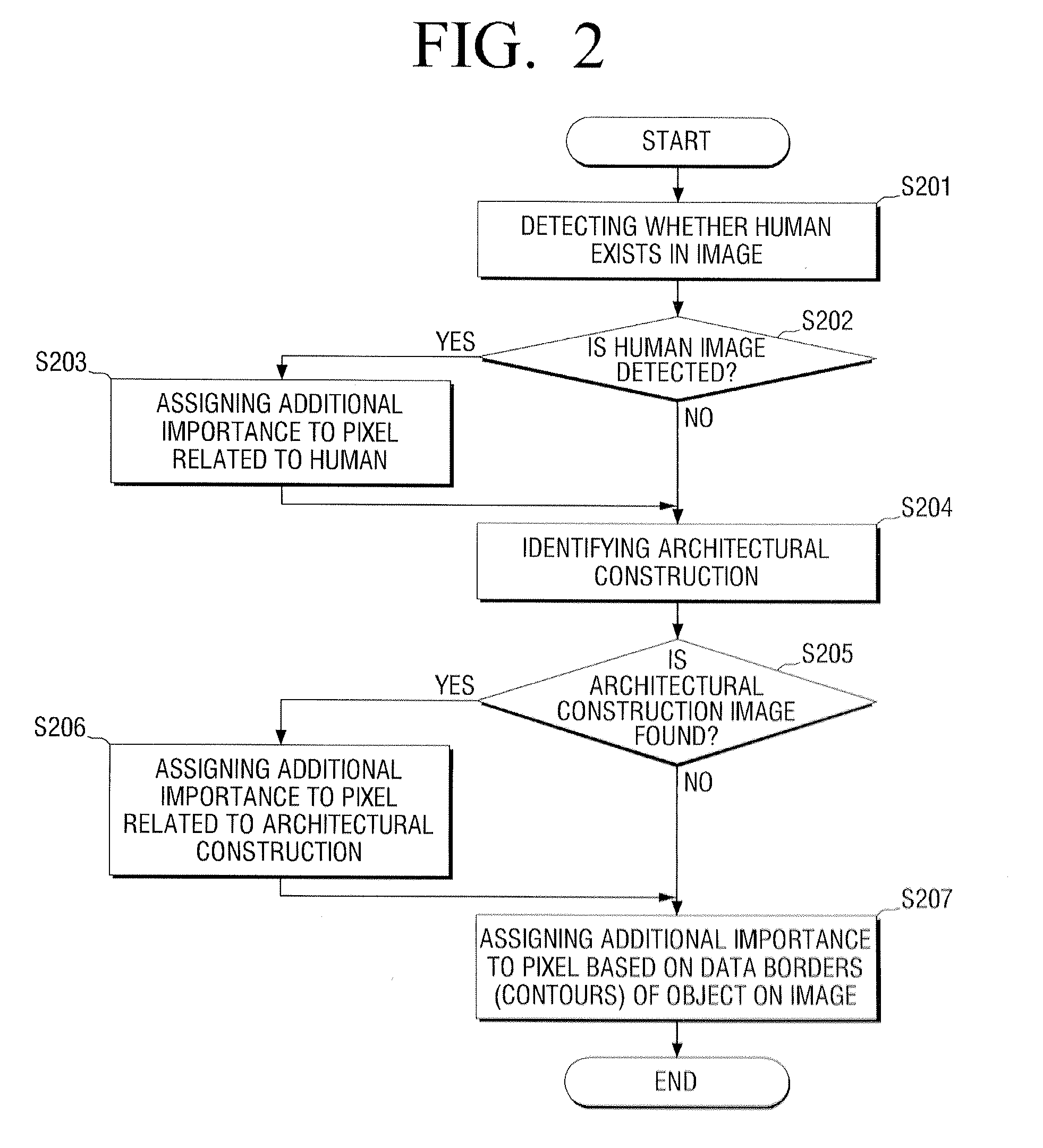Method and system of adaptive reformatting of digital image
a digital image and image technology, applied in the field of image processing, can solve the problems of complex calculation, inability to adapt to the changes in image quality, and inability to achieve the effect of improving the quality of the reformatted imag
- Summary
- Abstract
- Description
- Claims
- Application Information
AI Technical Summary
Benefits of technology
Problems solved by technology
Method used
Image
Examples
Embodiment Construction
[0100]Reference will now be made in detail to the embodiments of the present general inventive concept, examples of which are illustrated in the accompanying drawings, wherein like reference numerals refer to the like elements throughout. The embodiments are described below in order to explain the present general inventive concept by referring to the figures.
[0101]The present general inventive concept will be described in detail using graphic materials.
[0102]The present general inventive concept relates to a system and / or a method to change a size of an image by adding or removing pixels which have low importance (self-descriptiveness) in the image. The importance of each pixel is determined by a function of values. The kind of this function depends on information contained in the image and determines result of reformatting.
[0103]FIG. 1 is a flowchart illustrating a method of adaptive reformatting of an image, such as a digital photo and a document image, according to an exemplary e...
PUM
 Login to View More
Login to View More Abstract
Description
Claims
Application Information
 Login to View More
Login to View More - R&D
- Intellectual Property
- Life Sciences
- Materials
- Tech Scout
- Unparalleled Data Quality
- Higher Quality Content
- 60% Fewer Hallucinations
Browse by: Latest US Patents, China's latest patents, Technical Efficacy Thesaurus, Application Domain, Technology Topic, Popular Technical Reports.
© 2025 PatSnap. All rights reserved.Legal|Privacy policy|Modern Slavery Act Transparency Statement|Sitemap|About US| Contact US: help@patsnap.com



